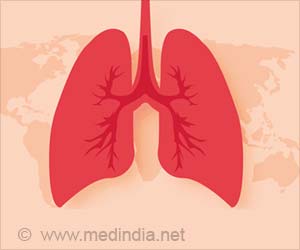How do you Diagnose Occupational Asthma?
Diagnosis of asthma is carried out in a stepwise manner, as follows:
- Medical History: The doctor will take a detailed medical history of the patient to ascertain whether the cause of the asthma is due to exposure to toxicants at the workplace or due to other causes.
- Physical Examination: The doctor will carry out a thorough physical examination. This primarily involves chest examination using a stethoscope, technically termed as auscultation. This will help to establish the extent of lung damage.
- Chest X-Ray: This will establish if one or both lungs are affected and how much of the lung tissue has been damaged.
- Complete Blood Count (CBC): This will provide information about infections and inflammatory reactions in the lungs.
- ELISA: This is known as enzyme-linked immunosorbent assay (ELISA). It is an immunological assay that looks for IgE antibodies, which are elevated if there is an allergic reaction in the lungs due to exposure to toxicants.
- Lung Function Test: This test measures the functional capability of the lungs by a technique called Spirometry, which uses an instrument called a spirometer. This technique measures how much air is inhaled, how much is exhaled and how fast it is exhaled.
- Bronchial Challenge Test: This measures the lung’s reaction, when the patient is challenged by breathing in drugs like methacholine or histamine through a nebulizer.
- Peak Expiratory Flow Rate (PEFR): The PEFR is the maximum speed of expiration. It is measured by a device called a Peak Flow meter.
How do you Treat Occupational Asthma?
Avoiding exposure to the substance that triggers an asthma attack is the most important aspect of treatment. Besides this, medical treatments are also available, which include the following drugs:
- Bronchodilators: These drugs relax the muscles in the airways (bronchi), thereby causing dilation, which allows the air to flow freely. There are three types of bronchodilators:
- Beta-2 Agonists: These stimulate receptors called β2 receptors on the muscles lining the bronchi and make them relaxed. These are usually inhaled using a hand-held inhaler. Examples include Salbutamol, Vilanterol, and Formoterol. There are also long-acting beta agonists (LABA) that are used for the management of chronic asthma.
- Anticholinergics: A neurotransmitter called acetylcholine binds to muscarinic or M receptors and produces bronchoconstriction. Anticholinergics block the action of acetylcholine, thereby producing bronchodilation. Examples include Ipratropium, Glycopyrronium, Aclidinium, and Tiotropium.
- Theophylline: The exact mechanism of action of this drug is not known, but it reduces inflammation in the bronchi. It is sometimes used in combination with corticosteroids.
- Corticosteroids: These are steroid drugs that reduce inflammation in the bronchi and are used for long-term and
short-term control of asthma . These are administered through an inhaler, hence also called inhalational corticosteroids. Examples include Beclomethasone, Budesonide, Fluticasone, and Mometasone. Inhaled corticosteroids are also available in combination with LABA. - Leukotriene Modifiers: These drugs block the action of leukotrienes, which are molecules of the immune system that can cause asthma. Their duration of action is 24 hours. Examples include Montelukast, Zafirlukast, and Zileuton.
How do you Prevent Occupational Asthma?
The best way to prevent occupational asthma is to avoid exposure to the incriminating substance. For this to take place, stringent industry regulations and policies need to be in place to limit the exposure to toxic substances.

Providing personal protective equipment (PPE), such as masks, goggles, visors, aprons, helmets, overalls, and caps can reduce exposure significantly. Moreover, as per the Occupational Safety and Health Administration (OSHA) Guidelines, it is mandatory for employers to keep a Material Safety Data Sheet (MSDS) for every hazardous chemical that needs to be handled in the workplace. These types of safety precautions will go a long way towards preventing OA.










